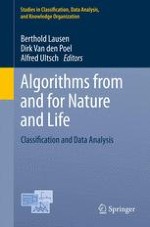2013 | OriginalPaper | Buchkapitel
Interactive Principal Components Analysis: A New Technological Resource in the Classroom
verfasst von : Carmen Villar-Patiño, Miguel Angel Mendez-Mendez, Carlos Cuevas-Covarrubias
Erschienen in: Algorithms from and for Nature and Life
Aktivieren Sie unsere intelligente Suche, um passende Fachinhalte oder Patente zu finden.
Wählen Sie Textabschnitte aus um mit Künstlicher Intelligenz passenden Patente zu finden. powered by
Markieren Sie Textabschnitte, um KI-gestützt weitere passende Inhalte zu finden. powered by
